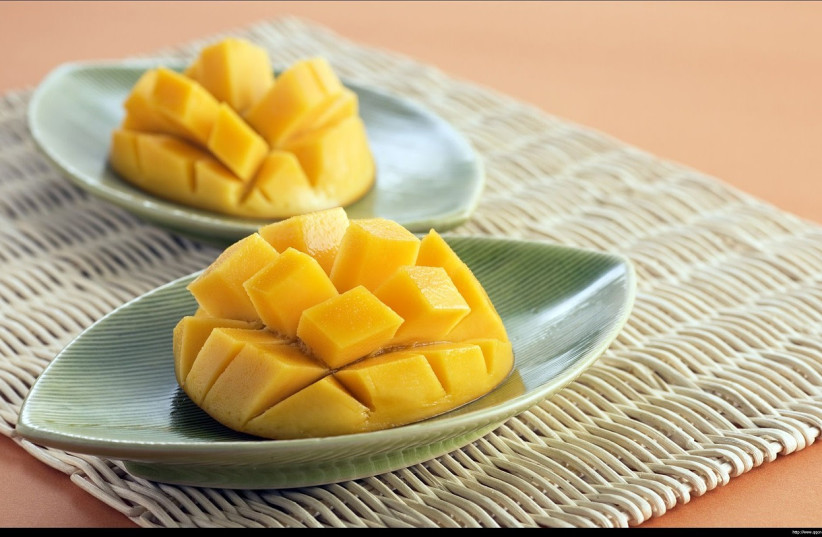July 22 is International Mango Day which is marked in a variety of countries, so this is the time to put a spotlight on this exotic and tasty fruit.
The mango is a common fruit of India, China, Thailand, Mexico, the Philippines, the Caribbean Islands, and Africa. In India, Pakistan, and the Philippines, it's even considered the national fruit.
If in the past, everyone knew that the leading industry in Israel's exports was oranges, today the leading industries are dates, avocados, and... mangos
Elkana Ben Yashar from The Mago Table of the Plants Council stated that the Israeli developments in the Volcani Institute in cooperation with R&D North and the Plants Council caused the industry to grow by about 50% in the last eight years, and the crop this year is expected to get to close 55,000 tons with the harvest having began in the last two weeks.
"Most of the crops are around the Kinneret and the Valley of Springs, and a minority of them are in the South, the Jordan Valley, and the Gaza Strip," said Ben Yashar. "In Israel, we have a variety of species: 'Shelly', 'Omer', and 'Maya'.

"Shelly is colorful - red-green-yellow - round, sweet, and without fibers, and it's the most-sold - some 35% of the crop. Omer is red, oblong, and relatively large, and it makes up 10% of the crop. Maya is yellow, the smallest of the species, and it is the oldest and most expensive and makes up seven to eight percent of the crop."
"The mango's great genetic diversity has enabled us to combine in the care plan a high quality of fruit together with a spectacular external look of the peel that combines red and yellow shades and to create several excellent mango varieties that ripen throughout the season," added Prof. Uri Lavi-Gapel from the Volcani Institute. "The mango flavor, the smooth texture, and the special aroma together with the external look of these varieties have turned the mango into attractive in Israel and abroad."
Is a sweet mango rich in sugar?
Some people worry about the amount of sugar contained in fresh fruit, especially mango which contained more sugar than other fruits.
Half a large mango is a single fruit serving. Nuts or almonds together with the mango will slow the absorption of sugar into the blood. This is how to enjoy natural sweetness from a yummy and juicy fruit together with important nutritional components like vitamins, minerals, and dietary fiber.
You cannot ignore the high cost of living, which hasn't skipped fruits and vegetables and caused a decrease in the consumption of fruits and vegetables in the country. Still, the mango has a high nutritional value, therefore, despite the high cost and in comparison to takeaway coffee or slushies, choosing it is preferable.
In any case, it's essential to differentiate between fresh mango and dried mango whose caloric density is higher and often has more sugar and fewer vitamins.
Mangos are an opportunity to consume 20 vitamins and minerals at once, and it's rich in Vitamin C and Vitamin A. Vitamins C and A are antioxidants that are good for the body.
Another important term is phytochemicals which give fruits and vegetables their colors and are themselves antioxidants. The different colors indicate different amounts of phytochemicals, and therefore, it's important to have a variety as each one helps us differently.
Our bodies aren't capable of creating phytochemicals, so we need to get them from food. Phytochemicals are impervious to extreme temperatures, so they aren't harmed in cooking.
Health organizations in Israel and abroad recommend eating fruits and vegetables in five colors (green, orange-yellow, red, white, and purple).
Beta-carotene from the carotenoid family is responsible for the orange color in mangos as well as others like carrots, pumpkins, squashes, persimmons, apricots, and melons. Eating fruits and vegetables that contain beta-carotene can lessen the chances of contracting cancer. It's also the main source of Vitamin A with anti-bacterial properties, and it supports the immune system and protects the skin. It's also essential for vision, especially at night.
